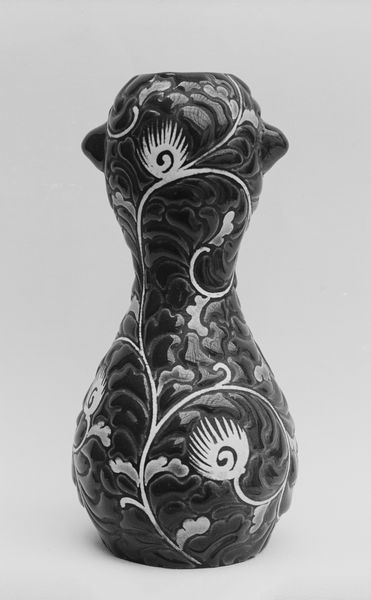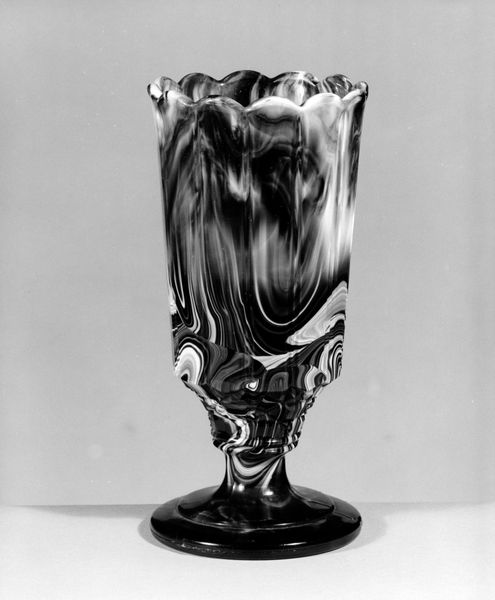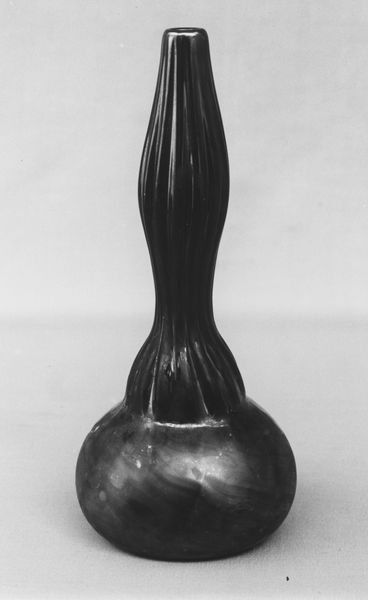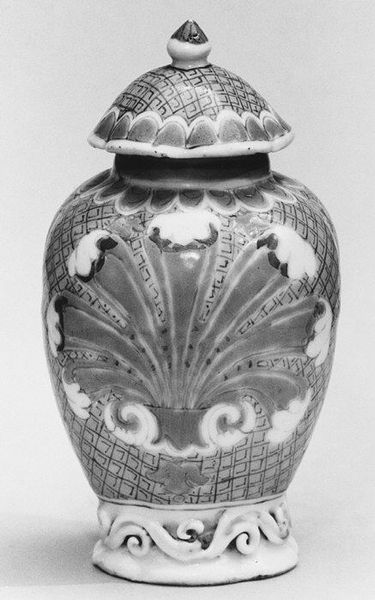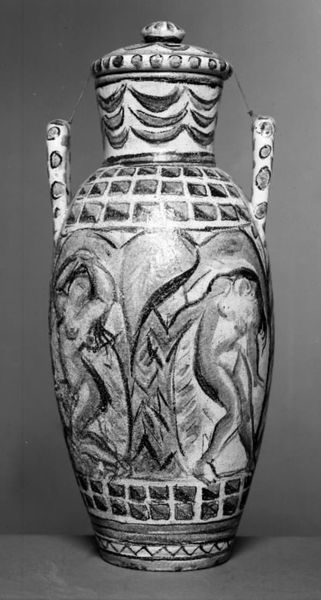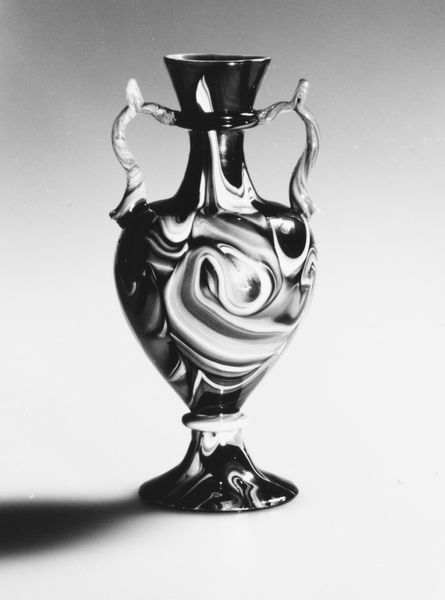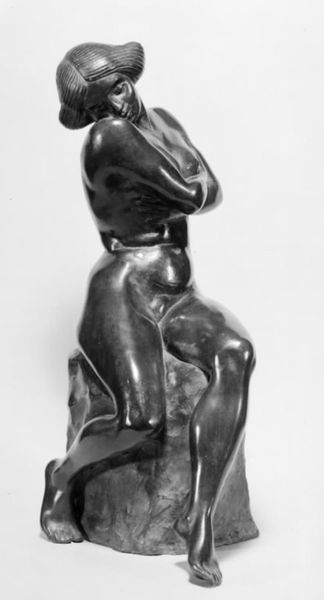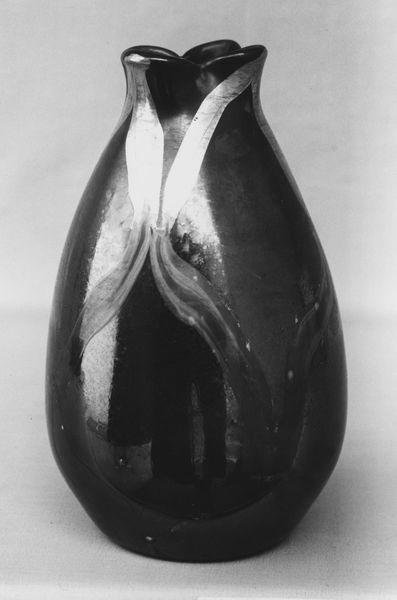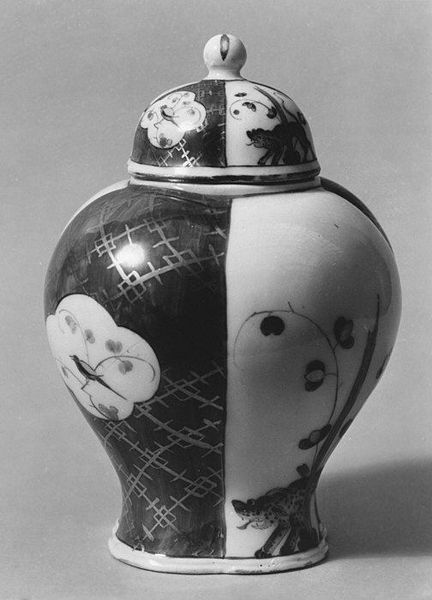
glass, sculpture
#
art-nouveau
#
sculpture
#
glass
#
sculpture
#
black and white
#
united-states
Dimensions: H. 6 1/8 in. (15.6 cm)
Copyright: Public Domain
Editor: This vase by Louis Comfort Tiffany, made between 1893 and 1896, showcases a mesmerizing pattern of swirling lines across its glass surface. The monochrome palette emphasizes its form. What statements do you think this piece tries to make? Curator: The vase sits within a complex period in American history, a time of industrial boom alongside significant social inequalities. While decorative arts often get dismissed, focusing solely on aesthetics risks overlooking their cultural work. The Art Nouveau movement, with which Tiffany is associated, embraced organic forms as a rejection of industrial manufacturing. What do you observe in the fluid lines and material choice? Does it reflect any ideas of beauty that contrast with, or perhaps mask, the harsh realities of that era? Editor: Well, the swirling lines feel very free and natural, almost like water flowing. It's beautiful, but I also wonder if this idealization ignores some of the social realities. It was a pretty turbulent period for workers' rights. Curator: Precisely! Tiffany's luxurious creations were accessible primarily to the wealthy. The labor and resources that went into crafting such intricate glass pieces, perhaps unintentionally, reflect an uneven distribution of resources during the Gilded Age. How might the opulence of the Art Nouveau style both appeal to and potentially alienate different social classes? Editor: It highlights the divide, right? By showcasing such elaborate craftsmanship, it indirectly underscores the labor and resources needed to create something so exquisite. It makes me wonder about the unseen hands that shaped this vase and the broader implications of luxury and labor. Curator: Indeed. Considering the object within this framework enables us to expand our understanding of aesthetics to engage meaningfully with broader historical, economic, and political dimensions. Editor: I hadn't thought about it that way. Thank you, it gave me a totally different perspective. Curator: That's the aim. Now let's think about...
Comments
No comments
Be the first to comment and join the conversation on the ultimate creative platform.
